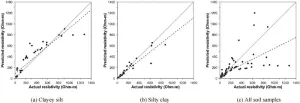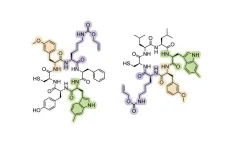Atypical metabolite levels at birth may increase SIDS risk
NIH-funded study suggests checking for metabolite pattern at birth could provide means to estimate SIDS risk
2024-09-11
(Press-News.org)
WHAT:
Newborns who had an atypical pattern of metabolites were more than 14 times as likely to die of sudden infant death syndrome (SIDS), compared to infants who had more typical metabolic patterns, according to a study funded in part by the National Institutes of Health. Metabolites are molecules produced by the body’s various chemical reactions. Researchers found that infants who died of SIDS had a specific pattern of metabolites compared to infants who lived to their first year. The researchers believe that checking for this pattern could provide a way to identify infants at risk for SIDS. The study was conducted by Scott Oltman, M.S., of the University of California San Francisco School of Medicine, and colleagues. It appears in JAMA Pediatrics.
SIDS is the sudden, unexplained death of an infant younger than 1 year of age that remains unexplained after a complete investigation. From more than 2 million infants born in California, researchers compared newborn screening test results of 354 SIDS cases to those of 1,416 infants who survived to at least one year old. The state screens all its newborns for many serious disorders. Test results include checking for metabolites that are markers for disorders and conditions. In the study, infants identified with the highest risk metabolic profile involving eight metabolites were 14.4 times more likely to have SIDS than infants with the lowest risk metabolic profile.
The authors say that testing for metabolic patterns may provide a way to identify infants at risk for SIDS soon after birth, which could inform efforts to reduce SIDS risk. Similarly, research on the biochemical pathways that produce the metabolites linked to SIDS may yield insights into the causes of SIDS and ways to reduce its risk. NIH funding for the study was provided by the Eunice Kennedy Shriver National Institute of Child Health and Human Development (NICHD).
WHO:
Marion Koso Thomas, M.D., of the NICHD Pregnancy and Perinatology Branch, is available for comment.
ARTICLE:
Oltman, SP. Early Newborn Metabolic Patterning and Sudden Infant Death Syndrome. JAMA Pediatrics. 2024. DOI: 10.1001/jamapediatrics.2024.3033
END
ELSE PRESS RELEASES FROM THIS DATE:
2024-09-11
Biotechnological pesticides are a promising alternative to traditional chemical pesticides. But we have limited knowledge of how toxic they are to other organisms in the environment beyond regulatory assessments. A new research centre will now work to provide this knowledge – especially to ensure the EU has a chance of joining the growing market for biotechnological pesticides. As for now, Europe has failed to keep up.
"If a thing kills something, we need to know how it kills, and who and what else it may kill," says Professor Nina Cedergreen of the University of Copenhagen’s Department of Plant and Environmental Sciences.
She is ...
2024-09-11
Proper power grounding systems are necessary for maintaining the safety and reliability of critical electrical subsystem infrastructure, such as substations. Power grounding systems provide a low-resistance path for electrical fault currents to flow into the earth, preventing electrical shocks, fires, and damage to vital equipment. Investigation of soil resistivity is crucial for designing power grounding systems. For the most cost-effective and efficient grounding systems for electrical substations, it is imperative to carefully ...
2024-09-11
Researchers at Chalmers University of Technology, in Sweden, have for the first time succeeded in combining two major research fields in photonics by creating a nanoobject with unique optical qualities. Since the object is a thousand times thinner than the human hair, yet very powerful, the breakthrough has great potential in the development of efficient and compact nonlinear optical devices. “My feeling is that this discovery has a great potential,” says Professor Timur Shegai, who led the study at Chalmers.
Photonic applications harness the power of light-matter interactions to generate ...
2024-09-11
Thanks to an experiment started before the Great Depression, researchers have pinpointed the genes behind the remarkable adaptability of barley, a key ingredient in beer and whiskey. These insights could ensure the crop’s continued survival amidst rapid climate change.
Grown everywhere from Asia and Egypt to Norway and the Andes mountains of South America, barley is one of the world’s most important cereal crops and has been for at least 12,000 years. As it has spread across the globe, random ...
2024-09-11
PULLMAN, Wash. -- A computer algorithm can efficiently find genetic mutations that work together to drive cancer as well as other important genetic clues that researchers might someday use to develop new treatments for a variety of cancers.
Reporting in the journal Frontiers in Bioinformatics, a Washington State University-led team used a novel network computer model to find co-occurring mutations as well as other similarities among DNA sequence elements across several types of cancer. The model allows for easier searches for patterns in huge seas of cancer genetic data.
“This is a ...
2024-09-11
What if that proverbial man in the mirror was a fish? Would it change its ways? According to an Osaka Metropolitan University-led research group, yes, it would.
In what the researchers say in Scientific Reports is the first time for a non-human animal to be demonstrated to possess some mental states (e.g., mental body image, standards, intentions, goals), which are elements of private self-awareness, bluestreak cleaner wrasse (Labroides dimidiatus) checked their body size in a mirror before choosing whether to attack fish that were slightly larger or smaller than themselves.
The ...
2024-09-11
LA JOLLA, CA—It’s a dogma taught in every introductory biology class: Proteins are composed of combinations of 20 different amino acids, arranged into diverse sequences like words. But researchers trying to engineer biologic molecules with new functions have long felt limited by those 20 basic building blocks and strived to develop ways of putting new building blocks—called non-canonical amino acids—into their proteins.
Now, scientists at Scripps Research have designed a new paradigm for easily adding non-canonical amino acids to proteins. Their approach, described in Nature Biotechnology on September 11, 2024, revolves around using ...
2024-09-11
A groundbreaking study led by researchers at the University of Colorado Anschutz Medical Campus reveals that stress-induced changes in sperm motility occur after a stressful event, rather than during it and improves sperm performance. The discovery is essential in understanding how stress impacts the reproductive process to improve fetal development outcomes.
The study was published today in Nature Communications.
Over the last five decades, there has been a notable decline in semen quality, which has coincided with environmental stressors. This new research identifies how stress affects the ability of ...
2024-09-11
Throat problems could impair autonomic nervous system's ability to regulate blood pressure
Research suggests problems at junction between air and food passages may ‘overwhelm’ the Vagus nerve
Patients with throat problems were less able to regulate their blood pressure in a new study led by the University of Southampton.
The study published in JAMA Otolaryngology is the first to observe reduced baroreflex sensitivity in patients with throat symptoms.
The baroreflex is a crucial part of the autonomic nervous system which detects changes ...
2024-09-11
The Centre for Research and Innovation for Black Survivors of Homicide Victims (The CRIB) is calling for decisive action to address the grief from homicide that is disproportionately affecting Black communities worldwide — and to tackle the root causes of homicide that impact this population.
In a paper published in the journal Homicide Studies, University of Toronto social work professor Tanya Sharpe and colleagues argue that the prevalence and spread of homicide grief — the grief that follows the ...
LAST 30 PRESS RELEASES:
[Press-News.org] Atypical metabolite levels at birth may increase SIDS risk
NIH-funded study suggests checking for metabolite pattern at birth could provide means to estimate SIDS risk




